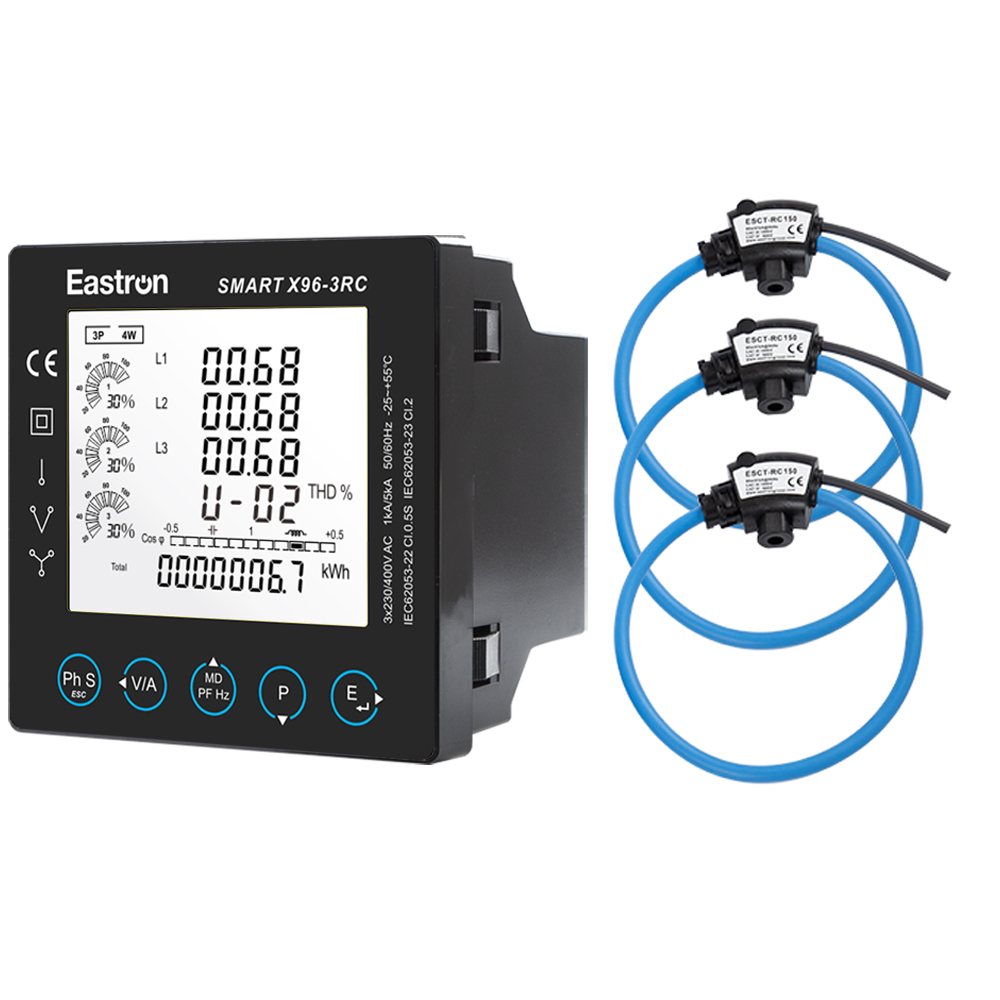Product Consultation
Your email address will not be published. Required fields are marked *
Power analyzers are essential instruments for measuring electrical parameters like voltage, current, power, and energy consumption. They come in different configurations to suit the type of electrical system being analyzed. Two common types are single-phase power analyzers and three-phase power analyzers, each designed for specific power supply systems. Understanding their differences helps in selecting the right analyzer for your application.
1. Electrical System Compatibility
Single-Phase Power Analyzers
Designed specifically for single-phase electrical systems, which typically have one alternating current (AC) voltage waveform and one current waveform.
Common in residential homes, small offices, and light commercial loads where power is supplied through a single phase and neutral.
Three-Phase Power Analyzers
Built to measure three-phase electrical systems, which consist of three separate AC voltage and current waveforms, each phase offset by 120 degrees.
Widely used in industrial plants, large commercial buildings, and heavy machinery that require three-phase power for higher loads and efficiency.
2. Number of Input Channels
Single-Phase
Usually equipped with two voltage inputs (live and neutral) and one or two current inputs for load measurement.
Simplified input configuration suitable for one voltage and one current channel.
Three-Phase
Contains six or more input channels: three voltage inputs (one per phase) and three current inputs, with some models offering additional channels for neutral or ground currents.
Allows simultaneous measurement of all three phases to provide comprehensive system analysis.
3. Measurement Parameters
Single-Phase Analyzers
Measure voltage, current, power (active, reactive, apparent), power factor, frequency, energy consumption, and harmonics for a single phase.
Useful for basic load analysis and energy monitoring in simpler electrical systems.
Three-Phase Analyzers
Provide detailed measurements for each of the three phases and calculate total or average system parameters, including unbalance and phase-to-phase voltages.
Can analyze complex phenomena such as phase sequence, voltage unbalance, and harmonic distortion across all phases.
4. Complexity and Data Output
Single-Phase
Easier to set up and interpret due to simpler electrical configuration.
Data output focuses on single-phase metrics.
Three-Phase
Requires more complex wiring and calibration.
Offers richer data sets for each phase and comprehensive power quality analysis.
5. Typical Applications
Single-Phase
Residential energy audits, single-phase motor testing, lighting load measurement, small office equipment.
Three-Phase
Industrial equipment monitoring, commercial building energy management, large motors, transformers, and power distribution systems.
6. Cost and Portability
Single-Phase
Generally more affordable and often more compact and portable due to fewer input channels.
Ideal for simpler, lower-budget projects.
Three-Phase
Typically more expensive because of additional hardware and enhanced features.
May be larger and require more setup time.
Summary Table
| Feature | Single-Phase Power Analyzer | Three-Phase Power Analyzer |
| Electrical System | Single-phase systems | Three-phase systems |
| Voltage Inputs | 2 (live and neutral) | 3 or more (one per phase, possibly neutral) |
| Current Inputs | 1 or 2 | 3 or more |
| Measurement Complexity | Basic single-phase metrics | Detailed multi-phase parameters |
| Application | Residential, small commercial | Industrial, large commercial |
| Cost | Lower | Higher |
| Setup Complexity | Simple | More complex wiring and calibration |
Conclusion
Choosing between a single-phase and a three-phase power analyzer depends on the electrical system you need to monitor. For residential or simple commercial setups with single-phase power, a single-phase analyzer provides the necessary measurements efficiently and cost-effectively. For industrial environments and large commercial buildings powered by three-phase systems, a three-phase power analyzer is essential to capture complete and accurate data across all phases.

Your email address will not be published. Required fields are marked *
We develop and produce high performance electricity meters, power analyzers, current sensors, communication modules and management systems. China Custom Smart Meters Manufacturers and Factory
Eastron China (HQ) : NO 52, Dongjin Road, Nanhu, Jiaxing, Zhejiang, China
Eastron UK : Suite 1 Cornwallis House, Howard Chase, Basildon, UK
Eastron EU : Unit 3 Finglas Business Centre, Jamestown Road, Finglas, Dublin, Ireland
Copyright @ Eastron Electronic Co., Ltd. All rights reserved Electricity Meters Manufacturers
